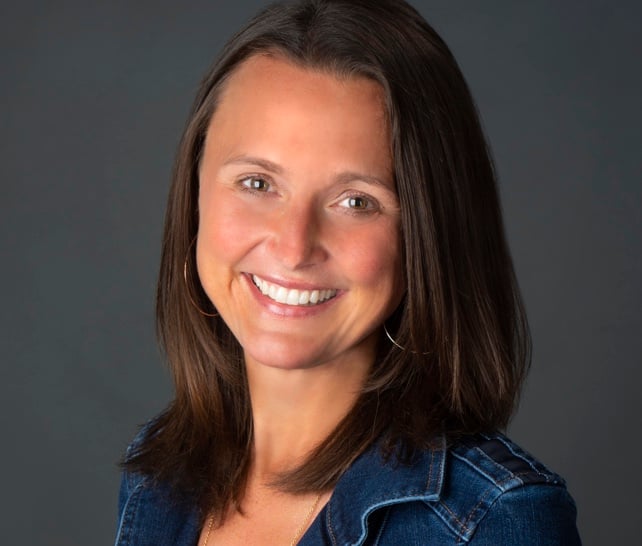Over the last ten years, I have enjoyed speaking about innovation to credit unions. While it’s a topic that has been repeatedly explored, we remain an industry in need of transformation. In the University of Pennsylvania Wharton piece “Learning from Failure in Innovation: Turning Setbacks into Advantages,” authors William and Phyliss Mack share, “admitting to mistakes and taking the time to learn from them will reward companies with deeper insights into their businesses and markets. Getting employees to talk about previous errors can foster innovative thinking in a way that successes cannot. Mistakes offer us new portals of discovery, which is their unique value. Without mistakes, we can’t really learn well.”
I have shared a version of this advice many times. I share it at Canvas. And yet, for me, being open about my failures has been a journey. I remember the moments vividly after I felt I had done a poor job facilitating, when I sent an email too quickly and in the split seconds of hitting send saw a typo, or when I raced with passion forward on an idea without communicating as fully to my colleagues as I should have. I felt such shame for my errors. The “I screwed up sizzle reel” plays on a loop in my head on my worst days.
The Center for Creative Leadership defines psychological safety as “the belief that you won’t be punished or humiliated for speaking up with ideas, questions, concerns, or mistakes.” They go on to share “a psychologically safe workplace begins with a feeling of belonging.Like Maslow’s hierarchy of needs — which shows that all humans require their basic needs to be met before they can reach their full potential — employees must feel accepted before they’re able to improve their organizations.”
For perfectionists and high achievers, finding that space of psychological safety that allows for more robust creativity, innovation, and exploration can be challenging; the experiences where we made missteps can leave us reeling.
Recently, in preparation for a presentation, I scrolled through hundreds of old photos and found a picture of myself taken early in my sixth-grade year. It captures the calm of the girl I was the year before things fell apart.

I endured bullying during my seventh-grade year. This was not a mild week-long bout of rudeness. This was a year-long, boundless and relentless approach, including name-calling, threats, and at times the throwing of objects. I begged my parents to pull me from school. While it did eventually come to an end as the school year came to a close, it left me scared, broken, and always waiting for the next awful thing to come to life and leave me shattered. While I would not call this difficult year a failure, it was a year full of shame.
Similarly, living through the pandemic impacted all of our employees. Depending on each person’s experiences, tenure, and confidence, mistakes or living through challenging times can threaten our trust levels as we search for psychological safety. “Safe for Work: Psychological safety in the workplace,” a report from Great Place to Work, explains, “Perhaps, more than ever, we need high levels of psychological safety in the workplace so employees feel comfortable sharing their concerns and struggles with their colleagues and managers. As a silver lining, 2020 has been a crash course for all of us in workplace empathy, flexibility and trust. With hope, these are lessons businesses will carry forward during the eventual transition back to the office and beyond.”
As cooperative people-first organizations, we are positioned well to create safe places that will lead to even more substantial outcomes. Based on my own experiences, including that tough seventh-grade year, I have to resist the urge to feel shame when I make a mistake, whether large or small. As I looked at that old photograph of a naive girl with vibrantly curly hair and dangling cat earrings, it caused me to wonder what I might have said to that young girl about to face a year of horror.
As with many of my work failures, I never shared anything about that year until recently. I hoped that most of the people in my life that knew about that dark time would avoid raising it. I was ashamed. I was also reasonably concerned that if people knew this, they might think it was justified, which might unleash some other version of bullying.
As nearly 30 years passed and I crested into my 40s, I started to quietly share tiny bits about that year with those I trusted. With palms sweating and my heart racing, I even shared my story publicly to audiences that I had the opportunity to engage. I gained confidence as my worst fears went unrealized, and I began to enjoy the gift of self-assurance that time grants us as we age.
If I could weave through the dimensions of time and speak to sixth grade Tansley, I would warn her what lies ahead, as I’ve always done better when I can prepare in advance. I would invite her to stand tall and speak up for herself, even when it felt impossible. I would encourage her not to hide and cower but to believe in who she was and who she would become. I would also tell her that the one friend who stood alongside her would remain her best friend throughout her life, becoming someone she could count on and would never let her down.
I would surprise my sixth-grade self by sharing that she would be a leader with enough confidence to speak in front of thousands of people. I would assure her that not only would she survive this tough year, but she would thrive. I would let her know that while nobody deserves to spend a year being bullied, the pain of that year would finely tune her empathy and ensure she would be a kind and generous friend and a nurturing mother. I would also share with her that walking through that level of hurt would add to her determination and grit to create an endless well of resolve.
I would also tell her to go easy on herself. I would say that as her own harshest critic, she would learn from both pain and failure and become a resilient human being who used her failures to become stronger and a curious, lifelong learner. I would also tell her it would eventually get easier to share with people when she skinned her knees.
The last two years have magnified the impact of prolonged emotional tumult. While each of us faces different and unique challenges, the hurt we endure can scar us. Each of us has a story of our darkest moments that have shaped us. We carry these experiences with us to work, and they impact us, especially in times of challenge.
When we are loved, when we have people to walk with us, and when we feel support through the pain, not only can we find our way through these trials, but we can also use the experience to inform a brighter future. None of us deserves these dark seasons, and yet they find us all. As we nurture those we care about most and those that we work with daily, walking with them through those dark times, we invite people to believe that they are safe not only to survive but also to thrive.
Enhancing our empathy not only improves innovation but can also strengthen our cultures. In Harvard Business Review’s “Making Empathy Central to your Company Culture,” author Jamil Zaki states, “To build empathic cultures, leaders can begin by identifying connectors, and recruiting them for help championing the cause. This not only increases the likelihood that new ideals will “take”; it also allows employees to be recognized for connecting with others — highlighting another positive social norm at the same time.”
As our credit unions look to grow, thrive, and compete, we must innovate. Doing so may require failure combined with a culture rooted in empathy that increases psychological safety. Whether loss experienced throughout the pandemic, a year-long seventh-grade bullying journey, or another untold pain, the people in our organizations have experienced real pain as human beings. People must know that we care about them, what they’ve been through and ensure that they can trust us. That demands we create safe spaces for people to fail within bounds. We must invite people to have the courage to share those failures without shame. What we learn through our darkest moments and our sharpest disappointments and how we leverage these lessons to grow can shape what’s possible for us as individuals and for our organizations.
What might you share with your sixth-grade self? What might you share with your colleague’s sixth-grade self? I invite you to share that today. The results might amplify your culture, invite more creativity, grow even more innovation, and ensure another human being knows someone cares.







